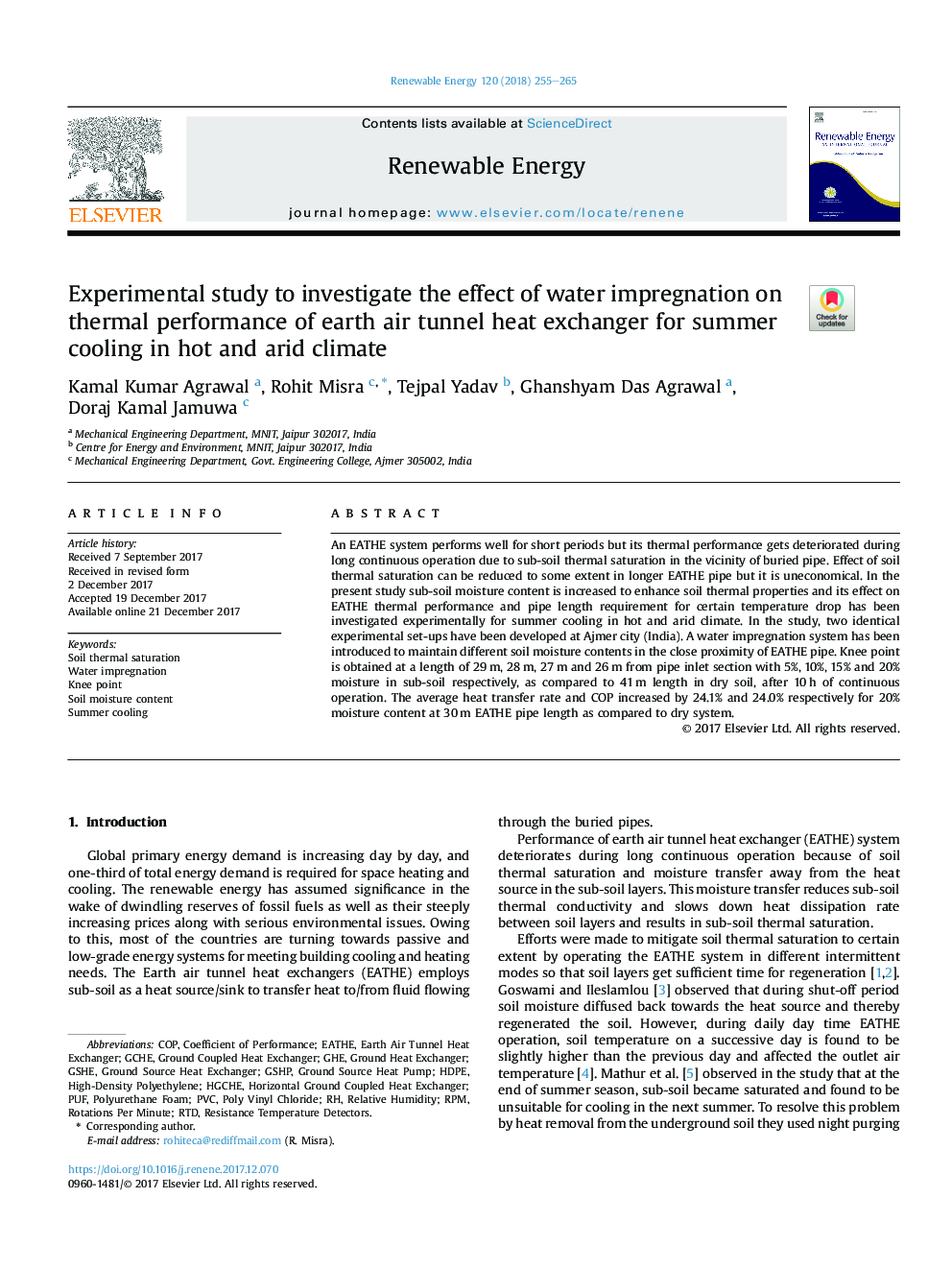| Article ID | Journal | Published Year | Pages | File Type |
|---|---|---|---|---|
| 6764818 | Renewable Energy | 2018 | 11 Pages |
Abstract
An EATHE system performs well for short periods but its thermal performance gets deteriorated during long continuous operation due to sub-soil thermal saturation in the vicinity of buried pipe. Effect of soil thermal saturation can be reduced to some extent in longer EATHE pipe but it is uneconomical. In the present study sub-soil moisture content is increased to enhance soil thermal properties and its effect on EATHE thermal performance and pipe length requirement for certain temperature drop has been investigated experimentally for summer cooling in hot and arid climate. In the study, two identical experimental set-ups have been developed at Ajmer city (India). A water impregnation system has been introduced to maintain different soil moisture contents in the close proximity of EATHE pipe. Knee point is obtained at a length of 29â¯m, 28â¯m, 27â¯m and 26â¯m from pipe inlet section with 5%, 10%, 15% and 20% moisture in sub-soil respectively, as compared to 41â¯m length in dry soil, after 10â¯h of continuous operation. The average heat transfer rate and COP increased by 24.1% and 24.0% respectively for 20% moisture content at 30â¯m EATHE pipe length as compared to dry system.
Keywords
GSHPGround Coupled Heat ExchangerCOPGCHEHDPESummer coolingGHEEarth Air Tunnel Heat ExchangerRTDRPMGround source heat exchangerGSHePUFResistance Temperature DetectorsRelative humiditycoefficient of performancePolyurethane foamGround heat exchangerSoil moisture contentKnee pointHigh-density polyethylenePVCground source heat pumprotations per minutepoly vinyl chloride
Related Topics
Physical Sciences and Engineering
Energy
Renewable Energy, Sustainability and the Environment
Authors
Kamal Kumar Agrawal, Rohit Misra, Tejpal Yadav, Ghanshyam Das Agrawal, Doraj Kamal Jamuwa,
